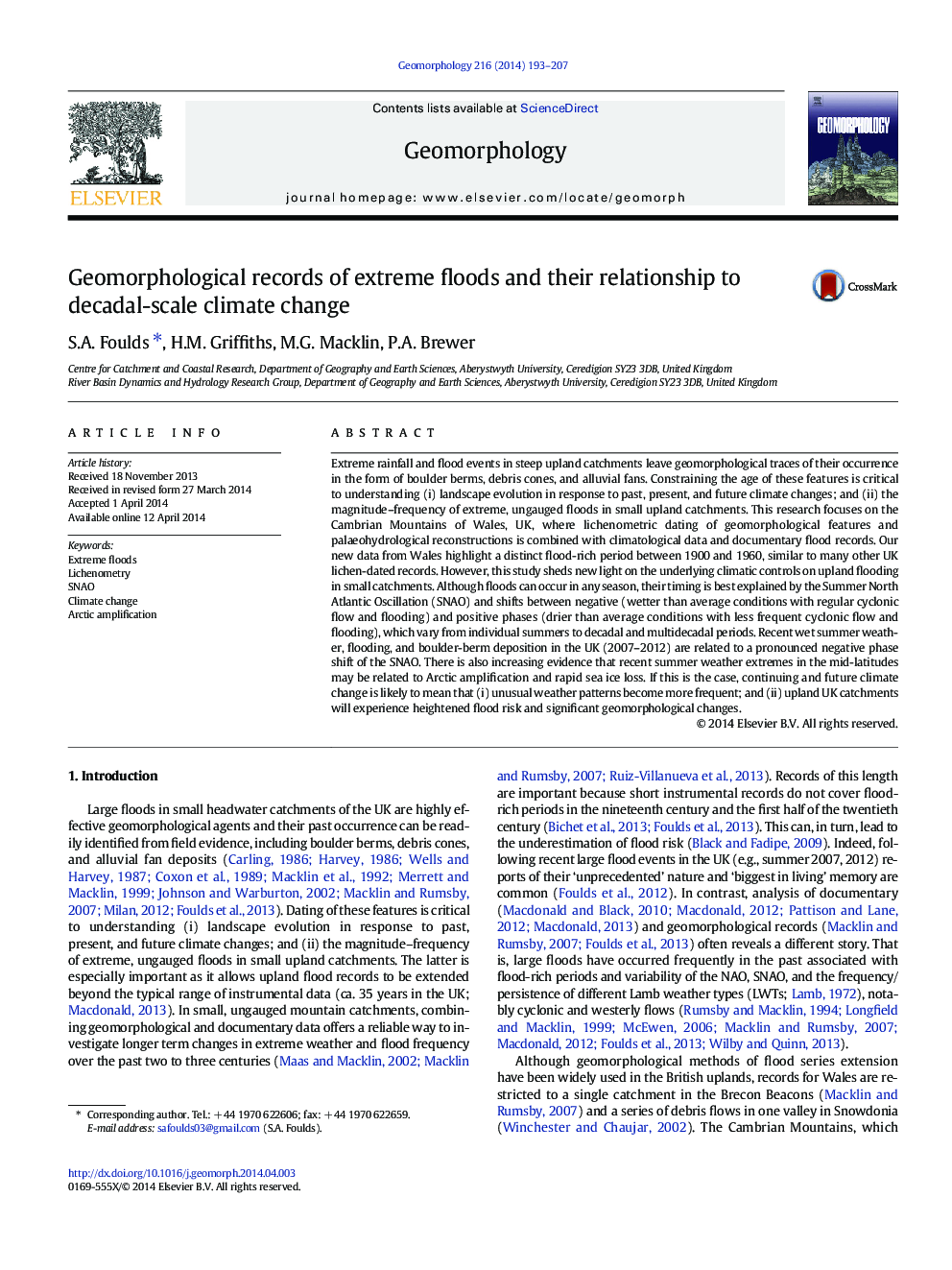| کد مقاله | کد نشریه | سال انتشار | مقاله انگلیسی | نسخه تمام متن |
|---|---|---|---|---|
| 4684525 | 1635433 | 2014 | 15 صفحه PDF | دانلود رایگان |
• Lichenometry was used to date geomorphological features in small mountain catchments.
• The period 1900–1960 was especially flood-rich.
• Flood timing is controlled by the Summer North Atlantic Oscillation.
• Recent flooding may be linked to Arctic amplification.
Extreme rainfall and flood events in steep upland catchments leave geomorphological traces of their occurrence in the form of boulder berms, debris cones, and alluvial fans. Constraining the age of these features is critical to understanding (i) landscape evolution in response to past, present, and future climate changes; and (ii) the magnitude–frequency of extreme, ungauged floods in small upland catchments. This research focuses on the Cambrian Mountains of Wales, UK, where lichenometric dating of geomorphological features and palaeohydrological reconstructions is combined with climatological data and documentary flood records. Our new data from Wales highlight a distinct flood-rich period between 1900 and 1960, similar to many other UK lichen-dated records. However, this study sheds new light on the underlying climatic controls on upland flooding in small catchments. Although floods can occur in any season, their timing is best explained by the Summer North Atlantic Oscillation (SNAO) and shifts between negative (wetter than average conditions with regular cyclonic flow and flooding) and positive phases (drier than average conditions with less frequent cyclonic flow and flooding), which vary from individual summers to decadal and multidecadal periods. Recent wet summer weather, flooding, and boulder-berm deposition in the UK (2007–2012) are related to a pronounced negative phase shift of the SNAO. There is also increasing evidence that recent summer weather extremes in the mid-latitudes may be related to Arctic amplification and rapid sea ice loss. If this is the case, continuing and future climate change is likely to mean that (i) unusual weather patterns become more frequent; and (ii) upland UK catchments will experience heightened flood risk and significant geomorphological changes.
Journal: Geomorphology - Volume 216, 1 July 2014, Pages 193–207
